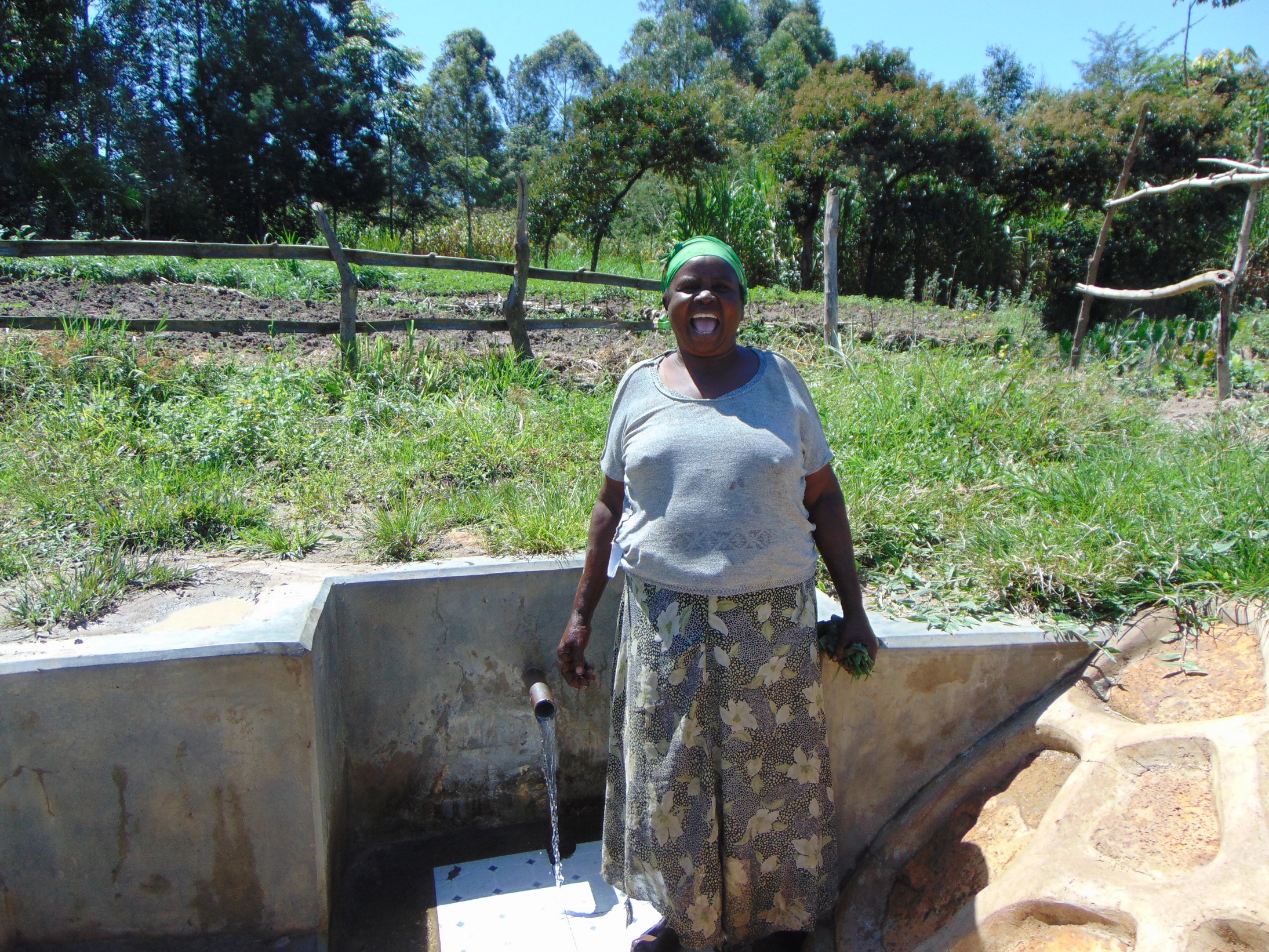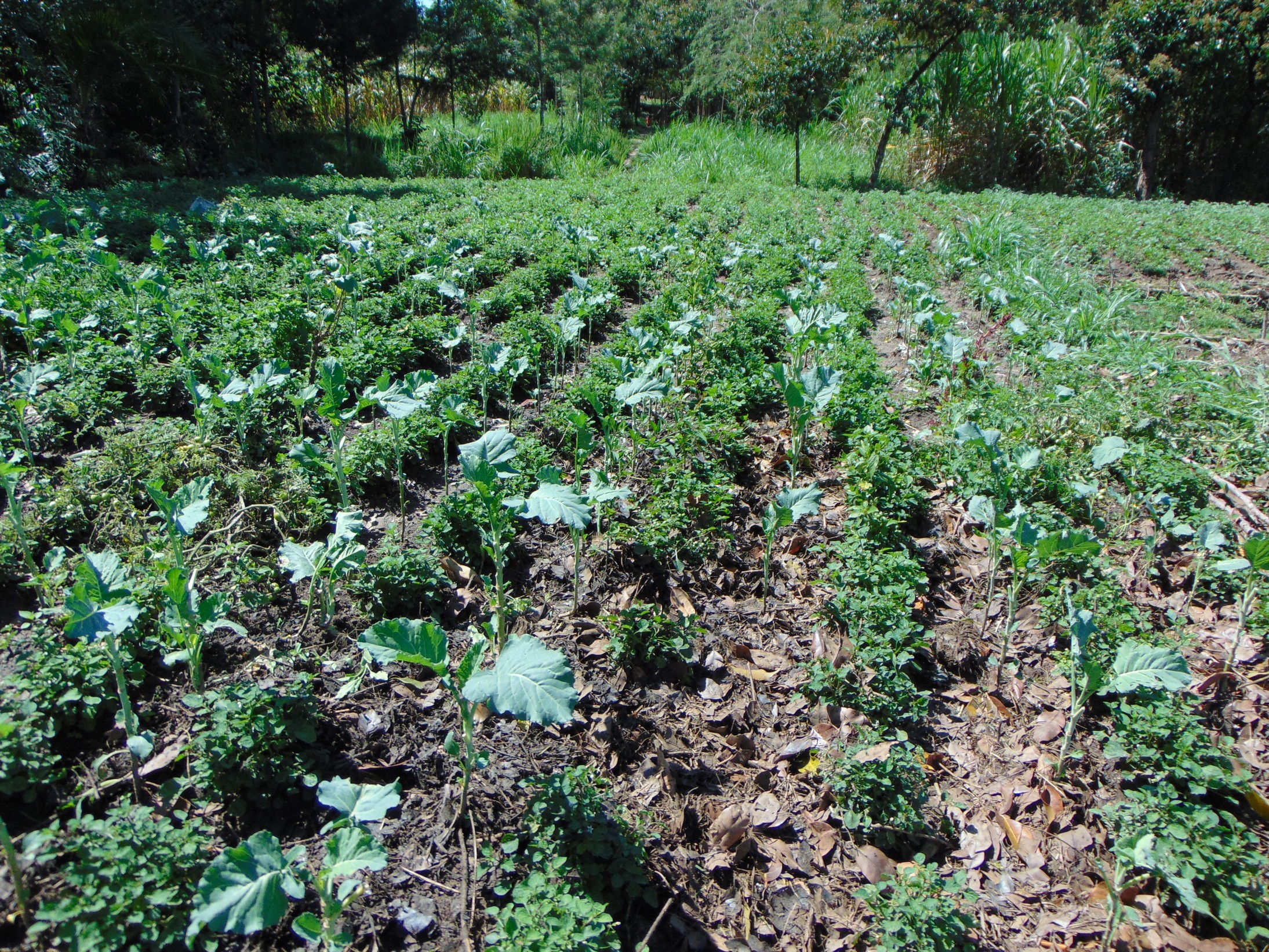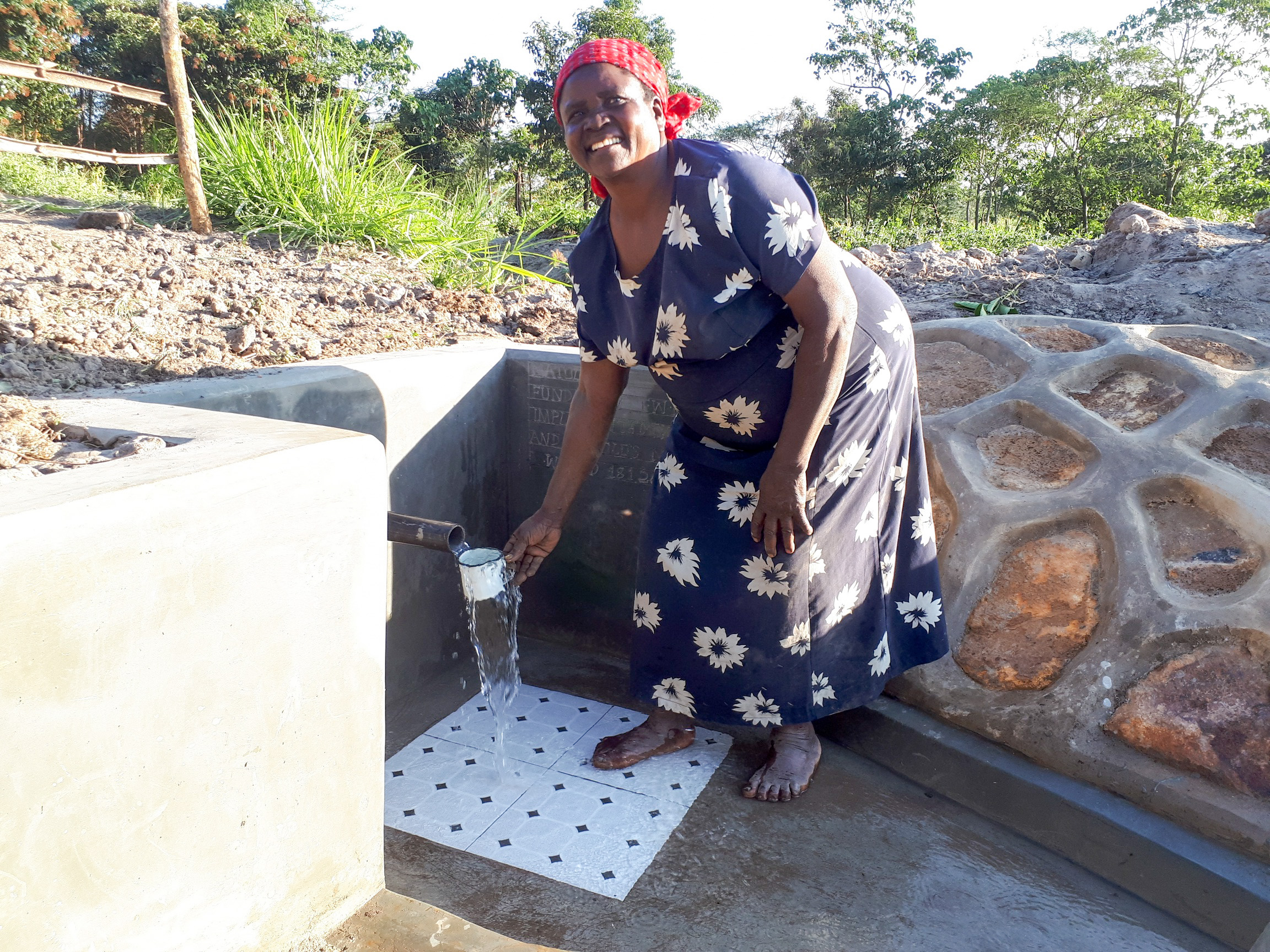Sweet (Potato) Rewards: How 1 Woman and 1 Spring are Changing Their Community
Meet Bilha Matolo.

Bilha Matolo radiates joy in front of protected Matolo Spring
Today, Bilha is radiant because of the changes she has both driven as a leader and witnessed in her community since the protection of Matolo Spring in her village of Luyeshe, Kenya. Bilha is the elected Secretary of her community’s water committee that looks after the spring, which was transformed from an open, algae-ridden puddle to a flowing source of clean water year-round in 2018.
“The changes that have occurred since last year are many,” Bilha reflected.
“The first is having clean and safe water for all of my people. This was something we did not have before the spring was protected, and this is the major change we have.”
But the transformation has been about much more than just the spring.
“My fellow women are seen busy in their farms producing food for they now have time which was once lost in taking care of sick children. Also, a lot of time was wasted at the unprotected spring. Since the project was completed, all of these troubles are unheard of.”
In its unprotected state, water from Matolo Spring had to be scooped from one container and poured into another, or an entire container had to be submerged below the surface while it filled. It was a lengthy process that would also stir up mud from the bottom of the spring, dirtying the water the more people fetched it.

Bilha collects water from unprotected Matolo Spring in 2018
“We used to have noise every now and then from women fighting over getting clean water, for if you came after someone else, then you would get dirty water. This is no more for we have clean and safe water which you can access anytime,” Bilha attested.
Bilha has not rested a second since the completion of Matolo Spring. Since she now spends less time waiting in line and collecting water, she has been able to direct more of her energy toward her farm, which she has turned into a demonstration plot. Bilha now organizes her neighbors, including the community’s children, and teaches them how to plant drought-resistant crops such as sweet potatoes. She emphasizes intercropping as an efficient use of land and water resources, and nurtures her crops using water from the spring now that there is no concern about over-using it.

Bilha’s demonstration plot highlights intercropped plants fed by spring water
The sweet potatoes, she explains, have many benefits since every part of the plant is edible and offers different nutritional values. She is proud to see other women back at work on their farms, too, instead of standing in line at the spring or at the hospital with their children. Little by little, they are beginning to tackle the malnutrition their children have faced for so long while also earning a little income by selling their surplus. Bilha has even helped pay for several children to attend school through her earnings.
With every spring protection and water project, there is the potential for life-changing outcomes like those happening right now for Bilha. It just takes the clean water to get them flowing.
To read more about Bilha’s story and the Matolo Spring protection project, click here.

Bilha gets a fresh drink from Matolo Spring soon after its completion
Home More Like This
Tweet